Video content plays an important role in e-learning, offering a dynamic and engaging way to deliver information. However, creating videos that retain learners’ attention requires more than just recording lectures or presentations. It involves strategically enhancing video quality, accessibility, and user experience.
This blog post will discuss some specific strategies, including text-to-speech (TTS) technology and optimizing video backgrounds, to improve the effectiveness of e-learning videos. So, let’s get in!
- Using Text-to-Speech for Better Inclusivity and Increased Interaction
Text to Speech (TTS) technology transforms written content into spoken words, offering significant benefits for e-learning. This feature is particularly useful for ensuring accessibility, improving engagement, and catering to diverse learner needs.
Accessibility
TTS makes content accessible to learners with disabilities, such as visual impairments or reading difficulties. By converting text into audio, it bridges the gap for auditory learners who may prefer listening to content over reading it.
Enhancing Engagement
The natural flow of speech can make learning feel more personal and immersive. TTS allows educators to create audio overlays for complex visual elements, enabling learners to process information more effectively.
How to Add Text to Speech to Improve Your Videos
To add text to speech in your videos, first, you need to get an easy-to-use video editing software, like the CapCut desktop video editor. Then, follow the steps below:
Step 1: Upload Video
Upload your video by clicking on Create Project > Import. Then, drag and drop your video into the editing timeline.
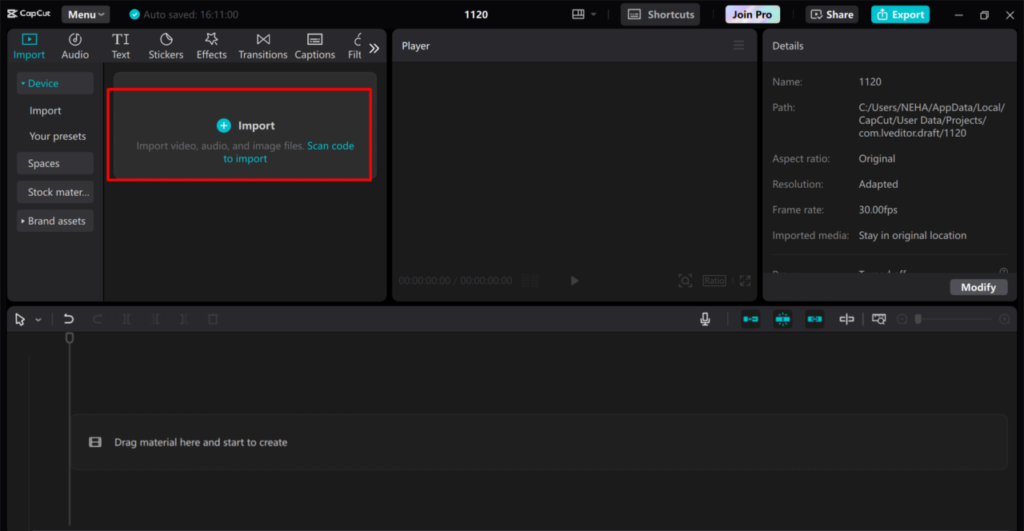
Step 2: Apply Text to Speech
To apply TTS, go to Text > Add Text. Insert your preferred text or script to include in your video here. Then, go to Text to speech > Select the voice of your choice > Start reading.
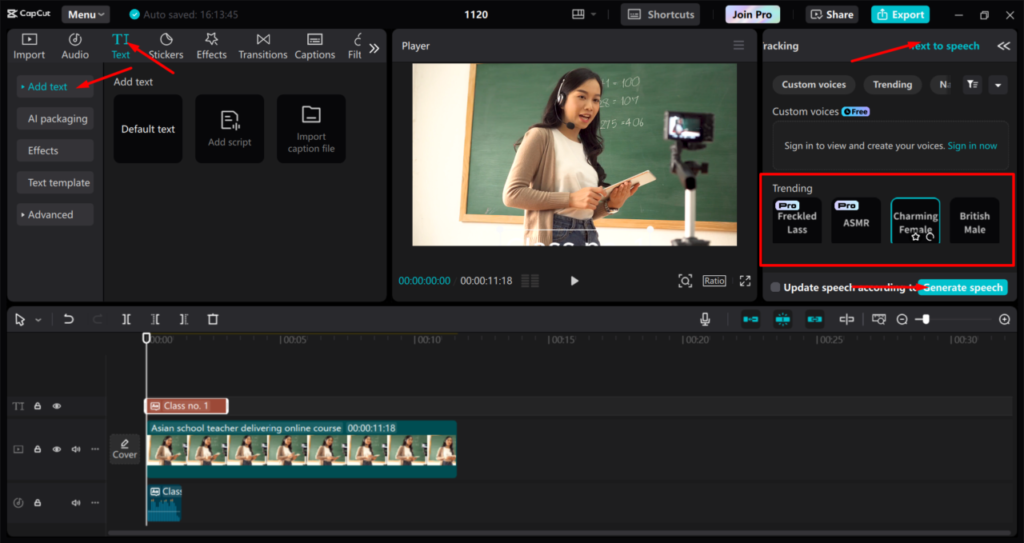
Step 3: Export Video
When finished, hit the “Export” button, configure the rendering settings, and press “Export” again.
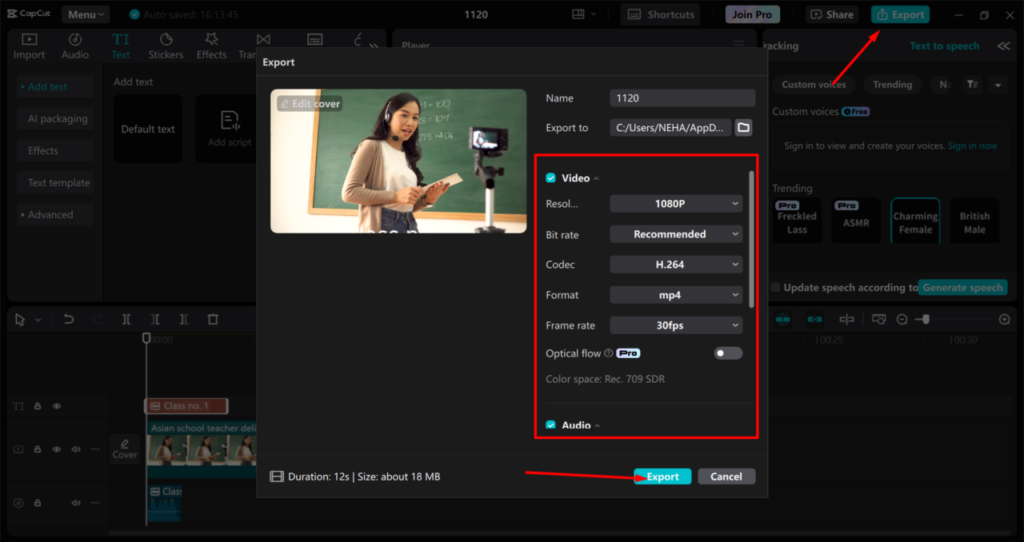
- Optimizing Resolution and Frame Rate
High-quality visuals are essential for maintaining learner interest. Ensure videos are recorded and exported in 1080p resolution or higher. Additionally, use a consistent frame rate (30fps or above) to deliver smooth and visually appealing content. Avoid fluctuations in quality that could distract viewers.
- Lighting and Audio Clarity
Lighting and audio quality significantly impact the perceived professionalism of e-learning videos. Poor lighting can obscure important details, while unclear audio frustrates learners. To address these issues:
- Invest in a three-point lighting setup to ensure even illumination.
- Use an external microphone for superior sound quality, and edit audio to eliminate background noise.
- Incorporating Subtitles and Closed Captions
Subtitles help learners who prefer reading along with the video or those in noisy environments. Closed captions also support learners with hearing impairments. Platforms like YouTube or some video editing software, like the CapCut desktop video editor, allow you easy subtitle integration, enhancing accessibility without extensive effort.
- Adding Interactive Elements
Interactive videos significantly increase engagement by involving learners in the content. For example:
- Clickable Hotspots: Include clickable areas that link to additional resources or explanations.
- In-Video Quizzes: Embed short quizzes at strategic points to test understanding and reinforce key concepts.
- Dynamic Visuals: Use animations and transitions to highlight critical information or demonstrate processes visually.
- Removing and Enhancing Video Backgrounds for Improved Focus
Distracting video backgrounds can reduce learner retention by drawing attention away from the subject matter. Background optimization, whether through removal, replacement, or enhancement, focuses attention on the content and creates a professional appearance.
Benefits of Background Removal
Removing cluttered or unprofessional backgrounds helps learners concentrate on the instructor or main visual elements. This is especially crucial for technical subjects, where distractions can hinder understanding. Clean, distraction-free backgrounds create an environment conducive to focused learning.
How to Remove Background from Video
Here’s how you can remove background from video using the CapCut desktop video editor:
Step 1: Import Video
Open the CapCut desktop video editor and click on the “Import” button to add your video to the media library. Drag it to the timeline for editing.
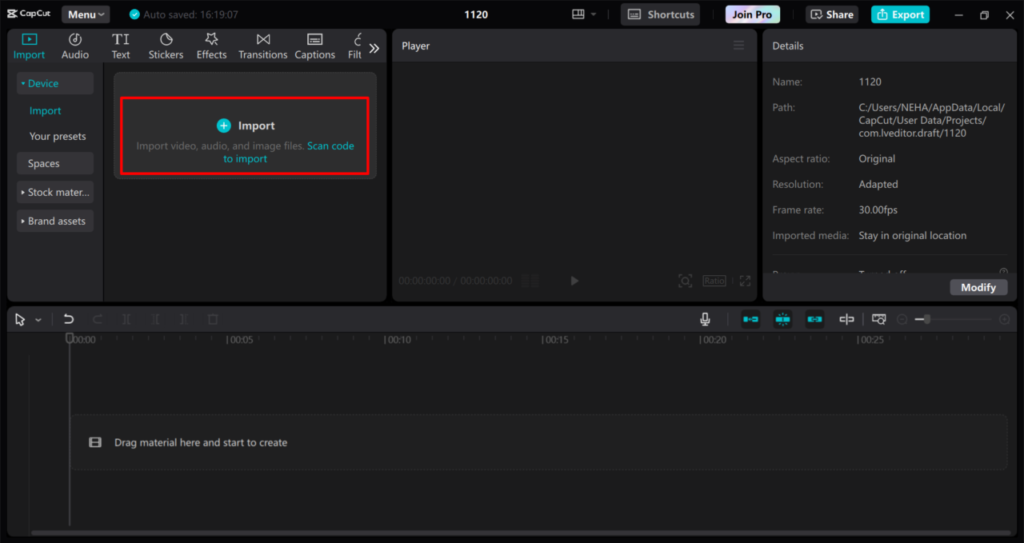
Step 2: Background Removal
Select the video on the timeline, go to the “Remove BG” tab, and enable “Auto Removal.” Adjust settings as needed for a clean cutout.
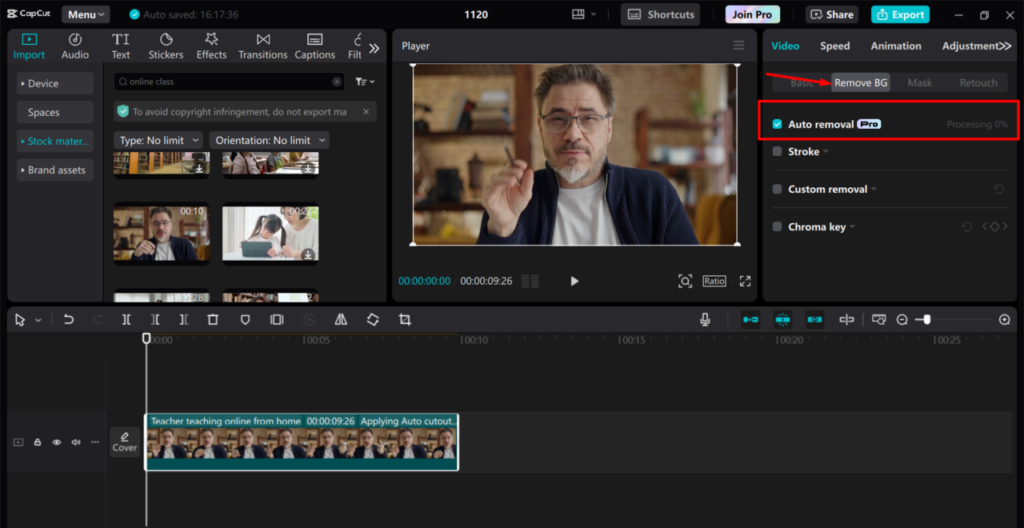
Step 3: Export Video
After finalizing, select “Export,” pick your desired resolution and format, and save your video without a background.
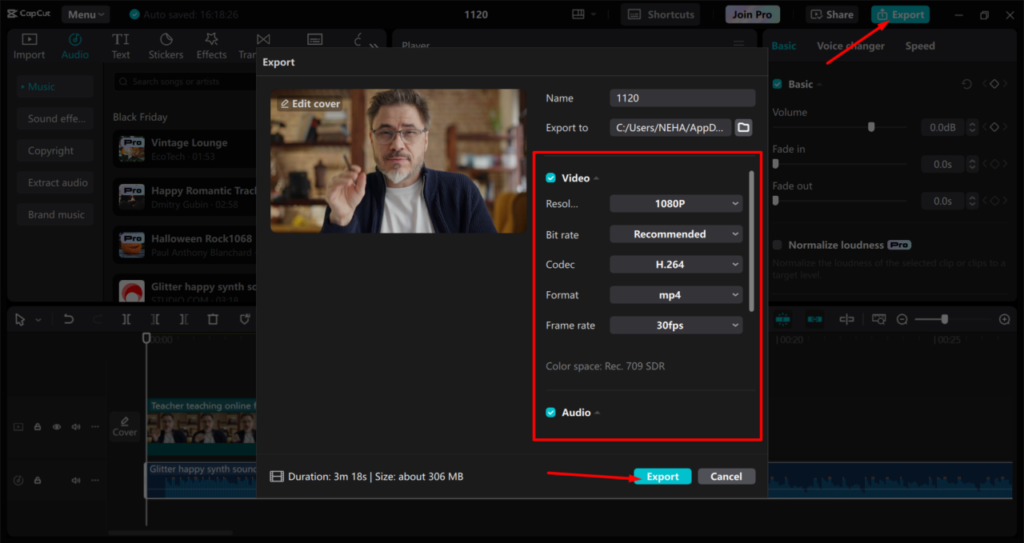
Enhancing Backgrounds Post-Removal
After removing a distracting background, consider replacing it with minimalistic or thematic visuals. For instance:
- Plain Color Backgrounds: Neutral tones help reduce visual strain and keep the focus on the speaker.
- Thematic Backgrounds: Use backgrounds that align with the course’s subject matter. For example, a virtual lab for science topics or a classroom setting for educational courses.
- Overlay Graphics and Animations: Add subtle overlays, such as key points, formulas, or diagrams, to make the background interactive and informative.
- Evaluating and Iterating on Video Quality
Improvement is an ongoing process. Regular evaluation and iteration help identify areas for enhancement and ensure videos remain engaging and effective.
Monitoring Analytics
Track key metrics such as watch time, drop-off points, and replayed sections. These insights reveal which parts of the video are engaging learners and which need improvement.
Gathering Learner Feedback
Encourage learners to provide feedback on video clarity, content quality, and overall engagement. Use this feedback to refine future videos.
Iterative Improvements
Regularly update videos based on analytics and learner feedback. For instance, if a specific segment has high drop-off rates, consider re-recording it with improved visuals or narration.
Conclusion
Creating high-quality video content is essential for retaining learners in e-learning programs. By integrating text-to-speech technology, optimizing video backgrounds, and incorporating additional enhancements, educators can create engaging, accessible, and professional videos. These strategies not only improve learner retention but also elevate the overall learning experience, setting the foundation for long-term success in e-learning initiatives.
Caroline is doing her graduation in IT from the University of South California but keens to work as a freelance blogger. She loves to write on the latest information about IoT, technology, and business. She has innovative ideas and shares her experience with her readers.


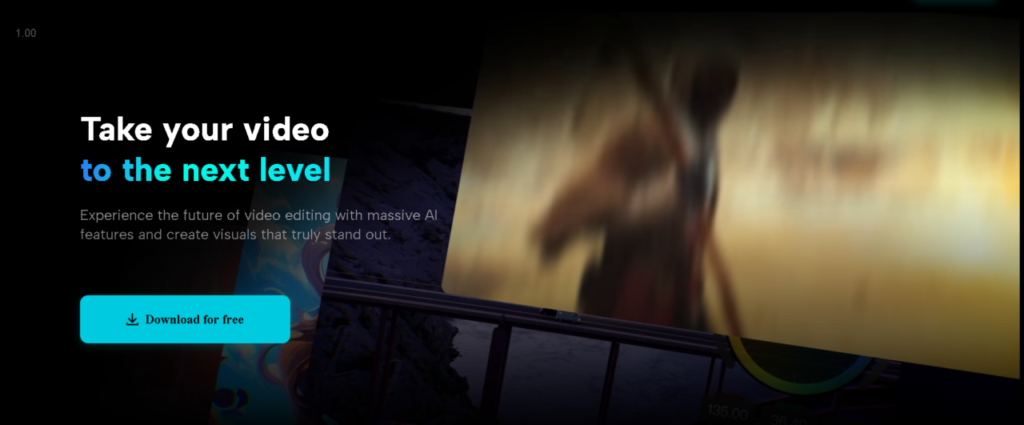



![‘Frankenstein’ Review – Guillermo del Toro’s Definitive Look At The Nature And Nurture Of Monstrosity [TIFF 2025] ‘Frankenstein’ Review – Guillermo del Toro’s Definitive Look At The Nature And Nurture Of Monstrosity [TIFF 2025]](https://cdn.geekvibesnation.com/wp-media-folder-geek-vibes-nation/wp-content/uploads/2025/10/Frankenstein-175_PF_20240430_20377_R-300x200.jpg)